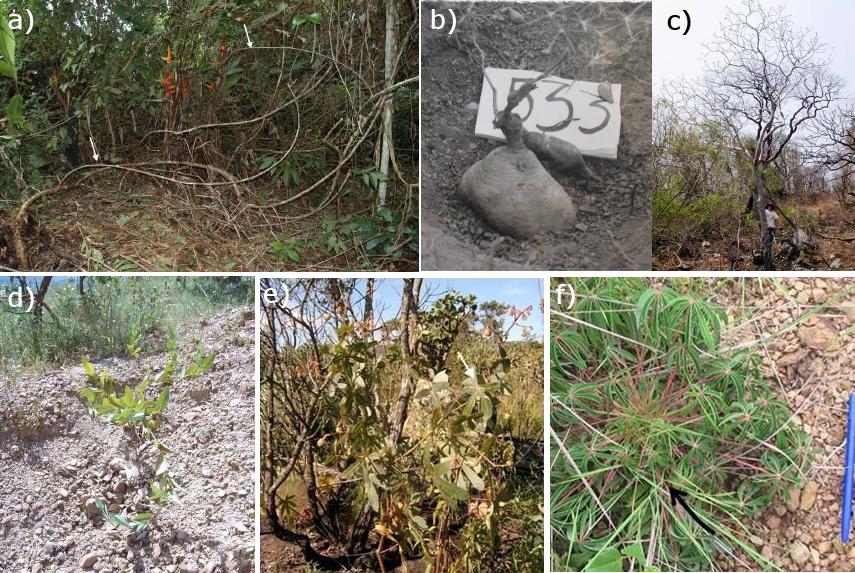Phylogeographic patterns arising from environmental modifications during the Pleistocene
In collaboration with Marc Delêtre, Guillaume Léotard, Doyle McKey, Jan Salick
The Neotropics hold one of the world's largest dry vegetation areas. There is much controverse on the historical extent of these dry vegetation formations, however, phylogeographical studies of genera restricted to these environments are scarce. The genus Manihot is restricted to environments that are relatively xeric (at least seasonnally), and numbers about 100 species with very different ecologies. Resolving the phylogeny of the genus helps tackling the issue of past vegetation in South America. Furthermore, a detailed study of the population structure of the patchily distributed species Manihot esculenta ssp. flabellifolia in French Guiana suggests that the now forested southern part of the region was formerly drier than it is now, while the central part of the region remained forested during glacial periods.

Some Manihot species in their natural habitat. a) Manihot quinquepartita, a forest vine present in southwestern and northestern Amazonia. Photo: Léa Ménard. b) Manihot subspicata, a species from northern Mexico. Photo: Rogers & Appan. c) Manihot websteri, a tree species from southwestern Mexico. Photo: Olson & Olsen. d) Manihot salicifolia, from the cerrado of central Brazil. e) Manihot alutacea, in the cerrado. f) Manihot stipularis.